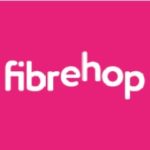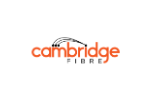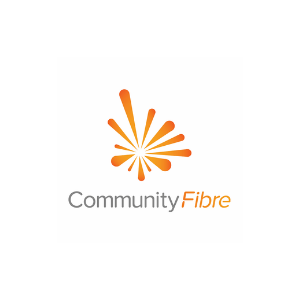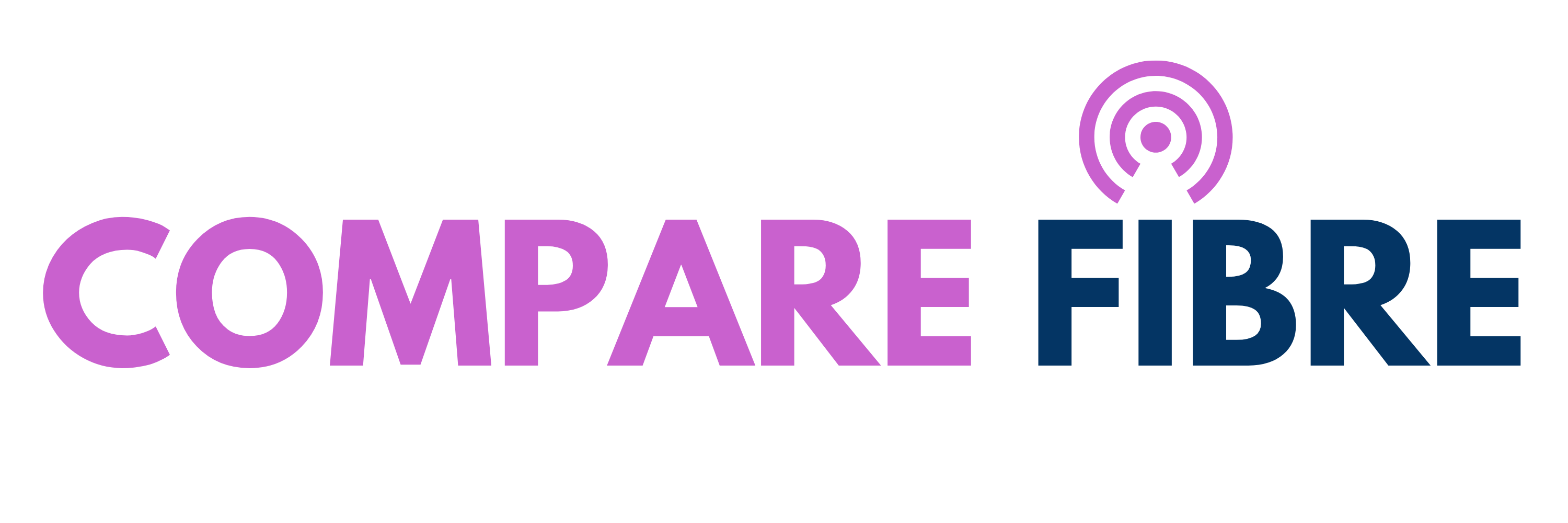Full Fibre Broadband Deals
Search & Discover The Best Full Fibre Broadband Internet In Your Area

Mbps *Avg. Speed
Month Contract
Downloads
Calls
Install
Per Month

Mbps *Avg. Speed
Month Contract
Downloads
Calls
Install
Per Month

Mbps *Avg. Speed
Month Contract
Downloads
Calls
Install
Per Month

Mbps *Avg. Speed
Month Contract
Downloads
Calls
Install
Per Month

Mbps *Avg. Speed
Month Contract
Downloads
Calls
Install
Per Month

Mbps *Avg. Speed
Month Contract
Downloads
Calls
Install
Per Month

Mbps *Avg. Speed
Month Contract
Downloads
Calls
Install
Per Month

Mbps *Avg. Speed
Month Contract
Downloads
Calls
Install
Per Month

Mbps *Avg. Speed
Month Contract
Downloads
Calls
Install
Per Month

Mbps *Avg. Speed
Month Contract
Downloads
Calls
Install
Per Month
Get Alerted When Faster Speeds Go Live In Your Area
A fibre optic broadband connection is growing in popularity option here in the UK, with packages offering increasingly faster speeds and more reliable connections. Full fibre is the fastest possible type of internet service currently available, with an expanding network allowing more homes to access these ultrafast speeds.
While many households across the UK now use fibre-optic broadband in one way or another, full fibre broadband isn’t yet the mainstream for most homes. A faster alternative to copper lines, full fibre broadband offers great speeds that go far beyond what superfast internet and traditional ADSL broadband can offer.
What is full fibre broadband, what types are available, and how fast is it? We’ve covered everything you need to know about this specific type of fibre optic broadband below. Read on for all the details on full fibre internet, from the cost to the equipment needed to the locations where this technology is available.
What is full fibre broadband?
Full fibre broadband is as the name suggests. It is a broadband internet connection that uses only fibre optic cables delivered directly into your home and connected to your router. Standard fibre-optic broadband services often use copper wire to reach your home after connecting to a cabinet. This is known as FTTC, or Fibre To The Cabinet. In contrast, full fibre broadband is a type of FTTP broadband – fibre to the premises. It may also be known as FTTH, or fibre to the home.
Essentially, full fibre broadband removes the element of broadband that slows down your connectivity. While copper wire has a far more limited capacity and speed, fibre optic cables used alone can do far more in less time – even more so as networks are upgraded to accommodate even faster speeds across the UK. Full fibre broadband is often referred to as ultrafast internet, while copper-based broadband is labelled as superfast.
The main difference between full-fibre and other broadband types is speed, as the entire full-fibre network uses fibre optic cables, which is the fastest way to transfer data. The data you send and receive via your full-fibre broadband connection travels at the speed of light, with end-user speeds which are up to 100 times faster than standard ADSL copper-based broadband.
Although your home may not need these ultrafast speeds now, the way we live and use the internet is changing. An increasing number of us are purchasing devices which rely on internet connections, such as smartphones, tablets, smartwatches, and smart home devices. As we become a more connected world, we download and upload more content than ever before, with a growing number of people starting to work remotely from home. If you can access a full-fibre broadband package, you will be future-proofing your home and ensuring that your connection can support your growing internet requirements.
How does full fibre broadband work?
Full fibre networks use fibre optic cables, which run from the exchange to the customer’s address, otherwise known as a Fibre To The Premises (FTTP) connection. These are the fastest possible connections, with speeds of up to 1Gbps available. However, availability is limited, and currently, just 19% of UK postcodes can access full-fibre.
In contrast, 95% of UK addresses can access Fibre To The Cabinet (FTTC) connections, which use a mixture of fibre optic cables and the slower copper telephone lines. The fibre optic connection runs between the exchange and the customer’s nearest street cabinet, where the fibre optic network ends. The final stretch is then completed with the copper telephone cables, which run between the street cabinet and your home. This slows the connection down, so these connections are not as fast as a full-fibre package, with speeds starting at roughly 36Mbps.
The slowest types of broadband connections are standard ADSL lines which are entirely based on the older copper telephone lines. These are the most widely available connections, with 99% of homes and businesses in the UK able to access ADSL download speeds of roughly 10Mbps. The exact speed you receive will depend on your distance from the broadband exchange and your street cabinet, so you could struggle with speeds of just 1Mbps in rural locations.
The more remote your location, the more expensive it will be for networks to install your area’s required infrastructure. This means that costs are likely to be more for the networks, and it may not be economically viable to install full-fibre just yet. Although full-fibre rollout is gaining pace, the networks are focusing on densely populated urban areas initially. If you find that you are not in a full-fibre area, you can check with Openreach or your local council to see when it is likely to be installed.
How fast is full fibre broadband?
Full fibre broadband is also known as ultrafast broadband thanks to the great speeds this particular internet solution offers. While standard ADSL is limited to about 10Mbps and superfast broadband can reach up to 80Mbps, full fibre broadband greatly outstrips both with up to an impressive 1,000Mbps download speed. That’s at least ten times more than FTTC technology for day-to-day use.
What speeds can I expect with full fibre broadband?
Full fibre broadband offers the second-best speeds on the market and more than accommodates the average household, even with multiple people working from home, playing games and watching HD streaming services. The speed offered by the average full fibre broadband package could allow for fast downloads of updates, HD video calls, watching 4K television and more without ever seeing a reduction in quality. With 10x the capacity of standard fibre broadband, you can expect high speeds any time of the day or night with ultrafast broadband services.
Is superfast, gigabit or ultrafast broadband better than full fibre?
There are many terms used to describe the different types of broadband packages, including superfast broadband, ultrafast broadband and gigabit broadband. It can get confusing. Superfast is a term used to describe connections with speeds of more than 30Mbps, with ultrafast broadband used to describe full-fibre connections with rates of more than 300Mbps.
Full fibre connections are also described as gigafast broadband, as their speeds can reach up to 1Gbps, which is the equivalent of 1,000Mbps. This means that you may hear the terms ultrafast and gigafast used to describe full-fibre FTTP broadband connections.
Is it worth getting full-fibre broadband installed at my house?
If you are a small household with just a couple of users connecting to the internet to send emails and browse websites, standard ADSL may be sufficient. However, at peak times, your broadband service will share the connection you receive to your street cabinet with your neighbours, which means a lower bandwidth to your home and a potentially struggling link. If you enjoy streaming videos and playing games online at peak times, such as in the evening, an ADSL connection may not be fast enough.
In these situations, a standard fibre broadband connection would provide an increase in speeds. You should consider fibre as an option if you have a larger home with multiple users looking to play games online, download large files and stream videos. For households with more than three users looking for reliable internet access, we would recommend at least opting for a standard FTTC broadband package.
Finally, the fastest most reliable connections are available with full-fibre FTTP connections. These packages provide you with unrestricted internet access with a dedicated line not shared with any of your neighbours. The fibre optic cables do not pass through your street cabinet, which means that your connection will not be competing for bandwidth during peak times.
For homes with users relying on a stable internet connection for remote working or multiple internet-enabled devices, full fibre is likely to be worth the investment. For example, if you are looking to steam 4K Netflix films, you will need an internet speed of 25Mbps. The higher bandwidth requirements mean that if two people in your home are looking to watch a 4K Netflix film at once, you will need speeds of at least 50Mbps.
Where is full fibre broadband being rolled out?
Currently, full fibre broadband doesn’t have full availability across the UK as providers work to extend and improve their network to support FTTP services. With the Government aiming to have 85% of homes and businesses in the UK connected to full fibre broadband by 2025, the rollout has already begun.
With different infrastructure providers targeting different areas of the UK, including Bristol, Birmingham, Essex and Swansea, full fibre broadband is currently in the process of being rolled out to many different parts of the UK – so it’s worth checking back regularly to find out when your local area will be receiving an upgrade.
Which providers offer full fibre broadband?
As you may expect, as the UK’s biggest internet infrastructure providers, BT Openreach and Virgin Media are heavily involved in the rollout of full fibre services. However, that doesn’t mean they are the only players in the field. Alternative networks like Cityfibre and Hyperoptic offer alternatives to mainstream internet brands, using the own infrastructure to offer a dedicated full fibre service in specific parts of the UK.
As for the providers, you’ll pay for access to full fibre internet. Much like older fibre solutions, either Virgin or Openreach owns most of the infrastructure. This means any providers owned by BT or Virgin, or those paying for the fibre network, have the option for full fibre broadband, including BT broadband, EE, PlusNet, Sky, TalkTalk, Vodafone, and Virgin Media.
How do I check if I can get full fibre broadband?
The best way to check if full fibre broadband is available to you is to check both Openreach and Virgin Media’s current network. As the majority infrastructure providers for the UK, these two platforms will be able to offer you insight into whether full fibre broadband is available near you. You could also check alternative networks like Hyperoptic if this is something you’re considering – but for many residential properties, choosing either Virgin Media or BT Openreach is the best solution.
Comparison sites allow you to search using your postcode to compare full-fibre broadband deals available to you. The type of broadband and the speeds available to you will depend on your location; however, a quick postcode check will provide you with access to various deals. Enter your postcode into the tool, and you will be provided with a list of potential options in your area.
To improve accuracy with the tool, you should add your landline number. Your phone number will allow the tool to predict the average line speeds to your exact address accurately. The postcode checker will let you know whether full-fibre is available, with your landline allowing the tool to provide an estimate of the download and upload speeds you can expect. Typically, those located in an urban area are more likely to have full-fibre access.
How can I find out which providers are offering full-fibre broadband in my area?
Almost every provider in the UK offers full-fibre packages, with most using the Openreach network. However, some providers are installing their own networks throughout the UK to deliver these ultrafast connections. This means you will need to compare multiple providers to see which options are available in your area.
The majority of full-fibre providers will offer a useful availability checker tool on their websites, so you can quickly check whether specific providers cover your area. Alternatively, a comparison site will save you time using your postcode to check which providers included in their panel operate within your area. The comparison site will present you with a list of potential providers and package options, making your choices much faster and easier to compare.
How much is full fibre broadband?
If you’d like to upgrade to full fibre broadband, and your home has the capacity to do so, the next thing to look at is what kind of package you want. Instead of a single, set price, all providers for full fibre broadband offer a range of differently sized packages to suit households’ needs across the UK. For the average household, incredibly high download speeds aren’t essential, making one of the lower-priced contracts the better choice.
How much are you likely to pay for full fibre broadband? Here are some of the prices on offer currently for full fibre broadband in the UK.
The price of full-fibre varies between providers; however, as availability expands across the UK, prices are becoming more competitive. If you are lucky enough to be located within a full-fibre area, you may be surprised to find that these ultrafast connections do not cost much more than standard fibre broadband.
The most expensive options will be the packages which offer the fastest download speeds of 1Gbps; however, cheaper packages are available with full-fibre deals often starting at 100Mbps. For example, BT offers full-fibre packages of 100Mbps, 300Mbps, 500Mbps and 900Mbps with prices starting from £39.99 up to £59.99.
Many other providers offer similarly priced deals, such as Virgin Media, Sky and TalkTalk, so it is always worth comparing the available options. Many providers will offer discounts to new customers, especially if you think of taking out a bundle that includes a TV package. It is also advisable to compare factors such as router delivery charges, installation fees, and contract length, as these could influence the most competitive option for you.
BT Full Fibre
For full fibre broadband, BT Openreach is pretty much industry standard. Most contracts span 24 months and require a small up-front cost to post your new full fibre hub. However, you won’t be paying anything extra for setup or activation, which is a plus in BT’s favour.
For 100Mbps speeds, you’ll be looking at £29.99 per month – or if you’re looking for faster, you can get 300Mbps for an extra £10, for a total of £39.99 per month.
Hyperoptic Broadband
A newcomer to the world of broadband, Hyperoptic deals specifically in fibre optic broadband solutions. While more limited in its reach and availability, Hyperoptic is slowly expanding across the UK. Depending on where you live, this provider may be a viable alternative to the Big Two in broadband.
Hyperoptic offers plenty of choice for internet users, with prices ranging from £22 to £40 on 12-month contracts. That includes four tiers of package: fast, superfast, ultrafast, and hyperfast. Speeds range from a basic 50Mbps up to an impressive 900Mbps, and you’ll have to pay for the use of a phone line on top.
Virgin Media
Virgin Media is perhaps the best-known provider for high-speed internet. If you’re after a full package deal for broadband, TV and phone, Virgin Media often offers deals to get more for your money. While they’re not known for being the most affordable on the market, their wide availability makes them well worth considering for your ultrafast broadband.
Like Hyperoptic, Virgin Media splits its broadband offering into four packages. Ranging from 108Mbps at £26.99 for an 18-month contract to £44.99 for 516Mbps, Virgin covers just about any household requirement for broadband. If you’re looking to upgrade beyond ultrafast, their new 1Gig network is another reason you may want to consider Virgin for your full fibre internet provider.
How do I check if I can get full fibre broadband?
If there’s a particular provider, you like the look of most, the best place to check if you can get full fibre broadband is by looking at their website. You can also get in contact with your choice of provider directly to find out whether their services are currently available in your area. As we mentioned above, full fibre is only going to become more mainstream in the next few years – and if you don’t yet have access to FTTP broadband, you may do soon.
Do I need full fibre broadband?
If your household is internet-heavy, and you find yourself frustrated with slow speeds or buffering streams, then upgrading to full fibre broadband can fix that annoying issue. The higher your download speed, the more people can access your broadband without slowing everything down. The result? A happier household, and one that can stay connected no matter what.
If upgrading to full fibre broadband sounds like the best fit for your household, comparing FTTP broadband prices is the place to start. Check out our comparisons today to find the best option on the market for you. Whether you’re looking for smooth only gaming, high-quality access for working from home, or to be able to stream from multiple devices in HD, switching to ultrafast full fibre broadband is a great fit for many homes across the UK.
Does full fibre broadband need a phone line?
Full fibre does not use the traditional copper telephone cables, so compared to ADSL broadband and standard fibre broadband, you will not need a phone line. The full fibre connection is provided via fibre optic cables, so there is no need for you to pay line rental for a telephone line. However, if you would benefit from a landline, this will be available as part of your fibre package.
If you cannot take out a full-fibre package, you will need to arrange an FTTC superfast fibre broadband connection or an ADSL connection. Although FTTC connections are known as a form of fibre broadband, the connection requires a copper telephone line to provide a link between your home and the street cabinet. This means that in most cases, you will need to pay for a landline line rental. However, Virgin Media packages are an exception, as they use a different cable network, so typically a standard Virgin Media fibre package will not require a phone line.
